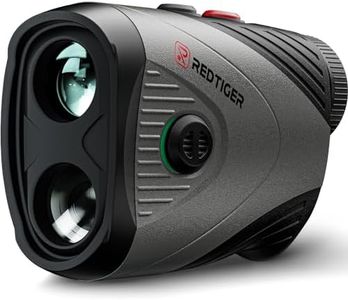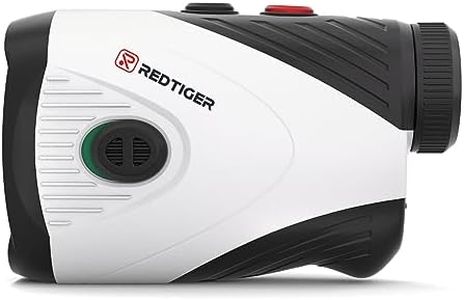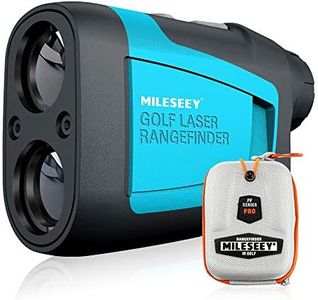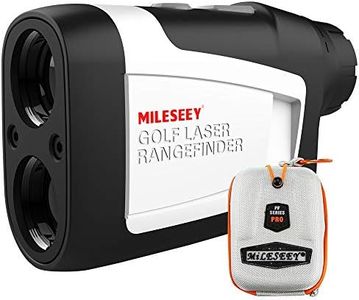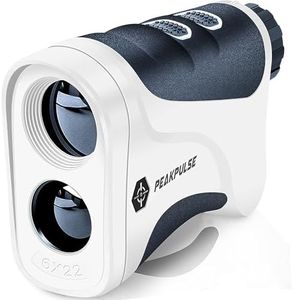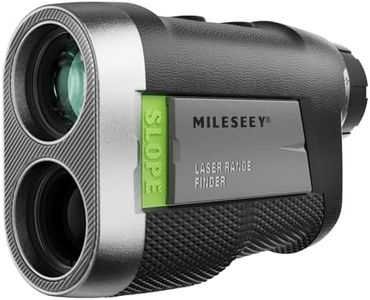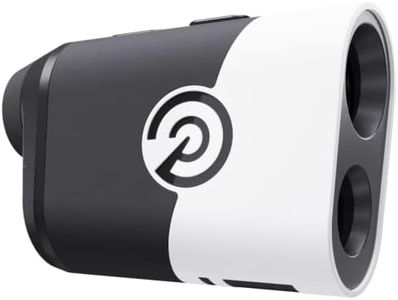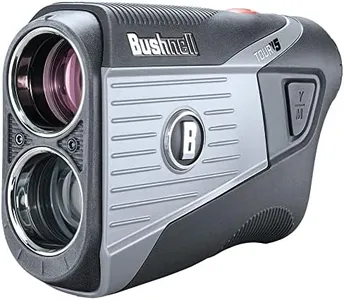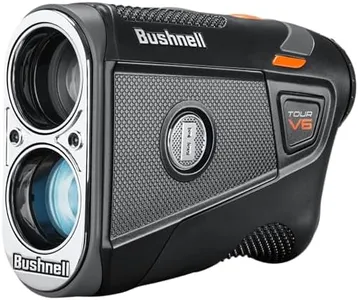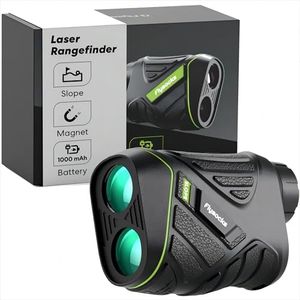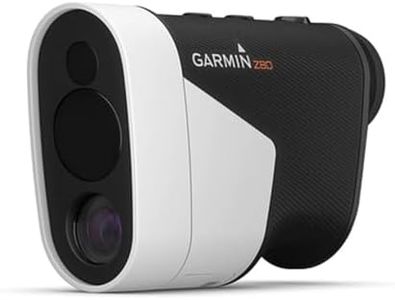We Use CookiesWe use cookies to enhance the security, performance,
functionality and for analytical and promotional activities. By continuing to browse this site you
are agreeing to our privacy policy
10 Best Golf Laser Rangefinders
From leading brands and best sellers available on the web.Buying Guide for the Best Golf Laser Rangefinders
Golf laser rangefinders are useful devices for quickly and accurately measuring distances on the golf course, helping you choose the right club and improve your game. When selecting a rangefinder, it's important to understand the most important features and specifications so you can pick one that fits your style of play and needs. By considering factors like measurement range, accuracy, ease of use, and display clarity, you'll find a device that’s best suited for your golfing goals.Measurement RangeMeasurement range tells you how far the rangefinder can measure distance, typically indicated in yards or meters. This is crucial because a greater range allows you to measure to distant targets like faraway flags or hazards. Rangefinders often fall into segments such as basic (up to 400 yards), mid-range (400-1000 yards), and advanced (over 1000 yards). If you mostly play on shorter courses or don't need to measure very far, a basic range can suffice. For those who want maximum flexibility or play on large courses with long holes, a longer range is more practical.
AccuracyAccuracy refers to how close the device’s measurement is to the real distance. This matters because small differences in distance can affect club choice and shot accuracy. Most rangefinders have accuracy ratings like +/- 1 yard or better. For recreational use, a margin of error of up to 1 yard is generally acceptable, while highly competitive players may want the tightest accuracy possible.
Slope MeasurementSlope measurement is a feature that accounts for changes in elevation, giving you adjusted distances based on the uphill or downhill slope. This helps in making better club choices. Some rangefinders come without slope, with slope, or with the ability to toggle slope on and off. If you play on courses with lots of elevation changes, or want more data for practice, slope measurement is useful. For tournament play, make sure you choose a device that can disable slope readings to comply with rules.
Ease of UseEase of use combines factors like weight, size, grip, and button layout. A lightweight, easy-to-hold rangefinder with a simple button arrangement is best for most golfers, as it enables quick one-handed operation. Some users prefer bigger buttons or displays for easier handling, while others might want a compact device that fits nicely in a pocket. Consider how comfortable and fast you want the user experience to be on the course.
Optics and Display ClarityOptics and display clarity refer to how bright, sharp, and easy-to-read the target and numbers are through the lens. Devices with clear optics and adjustable focus are easier on the eyes, especially in bright sunlight or low light. Rangefinders often offer basic, standard, or premium lenses and displays. If you wear glasses or play in varying weather and light conditions, prioritize a device with a bright, high-contrast display.
Target Lock and Vibration FeedbackTarget lock and vibration feedback help confirm when you've measured the flag and not background objects. Some rangefinders provide a visual cue or a small vibration when properly locked on the flag. For golfers who want extra confidence in their readings or play on busy courses where backgrounds are cluttered, this feature brings added peace of mind.
Battery LifeBattery life describes how long the device lasts before needing a new battery or recharge. Longer battery life means you’ll worry less about running out during a round. Devices may use regular replaceable batteries or rechargeable types. If you play frequently or don’t want to carry spares, look for one known for extended battery life.
